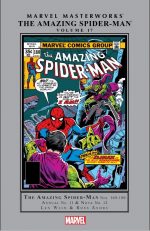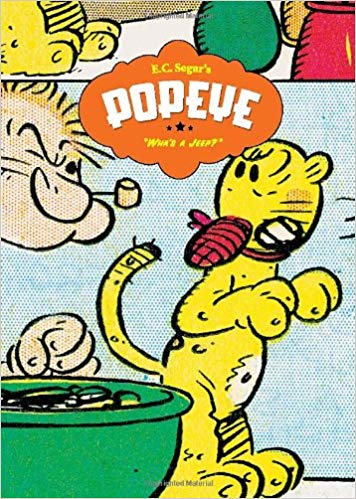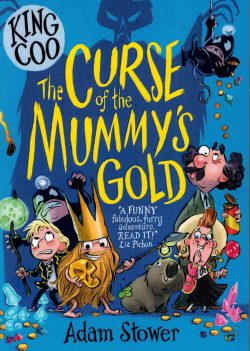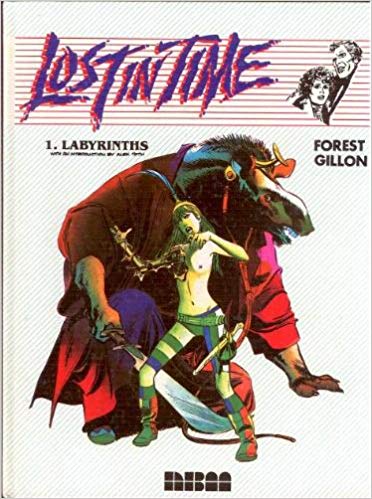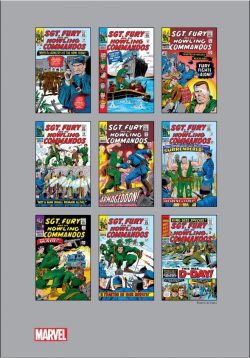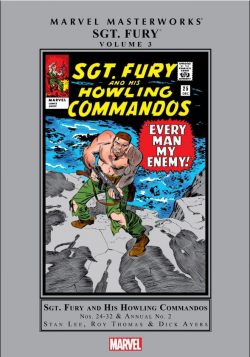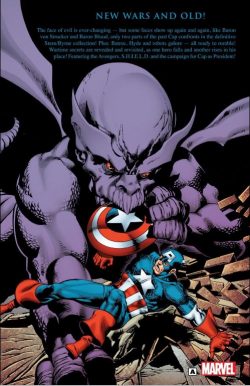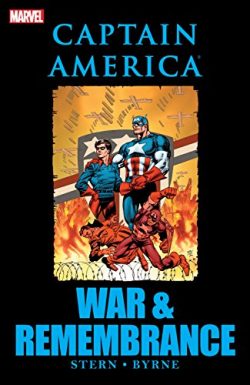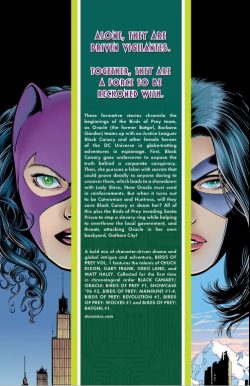
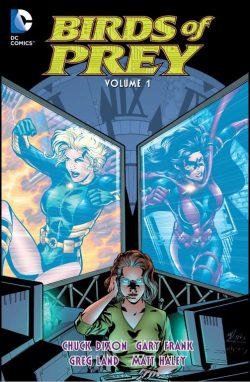
By Chuck Dixon, Jordan Gorfinkel, Gary Frank, Jennifer Graves, Matt Haley, Sal Buscema, Stefano Raffaele, Dick Giordano, Greg Land & various (DC Comics)
ISBN: 978-1-4012-5816-0 (TPB)
Truly groundbreaking at the time, the exploits of the Birds of Prey recount the missions and lives of a rotating team of female crime-fighters led by Barbara Gordon, the computer genius known as Oracle. Daughter of Gotham City Police Commissioner James Gordon, her own career as Batgirl was ended when the Joker blew out her spine in a terrifying kidnap attempt. Trapped in a wheelchair, she hungered for justice and sought new ways to make a difference in a very bad world…
Reinventing herself as a covert information gatherer for the Batman‘s clique of avengers and defenders, she became an invaluable resource for the entire superhero community, but in the first of these collected tales Babs undertakes a new project that will allow her to become an even more effective crusader against injustice…
This volume contains numerous one-shots, specials and miniseries that successfully introduced a mindblowing blend of no-nonsense bad-girl attitude and spectacular all-out action which finally convinced timid editorial powers-that-be of the commercial viability of a team composed of nothing but female superheroes.
Who could possibly have guessed that some readers would like effective, positive, clever women kicking evil butt, and that boys would follow the adventures of violent, sexy, usually underdressed chicks hitting bad-guys – and occasionally each other …? Or even eventually spawn their own TV series and sub-genre?
The issues gathered here – Black Canary/Oracle: Birds of Prey #1, Birds of Prey: Revolution, a pertinent section of Showcase ’96 #3, Birds of Prey: Manhunt #1-4, Birds of Prey: Revolution #1, Birds of Prey: Wolves #1 and Birds of Prey: Batgirl #1 (spanning June 1996 – February 1998) – comprise a breathtaking riot of dynamic, glossy crime-busting, heavily highlighting the kind of wickedness costumed crusaders usually ignore: white collar and thoroughly black-hearted…
The first tale ‘One Man’s Hell’, written by Chuck Dixon and illustrated by Gary Frank & John Dell, is set at a time when veteran martial arts crime-crusher Black Canary was slowly going to hell after the death of her long-time lover Oliver Queen. Of course, he got better a few years later (don’t they all?)…
Broke, uncontrolled and hell-bent on self-destruction, the increasingly violent and adrenaline-addicted heroine is contacted by a mysterious unseen presence and dispatched to a third world country to investigate a series of “terrorist attacks†that always seem to profit one unimpeachably benevolent philanthropist…
With nothing left to lose, Canary undertakes the tragically brutal mission and gains an impossibly valuable prize… purpose.
Peppered with an intriguing array of guest-stars and villains, this socially-conscious high-octane thriller established the Canary as one of the most competent and engaging combatants of the DCU and a roving agent of conscience and retribution more than capable of tackling the villainous scum who were clever enough to stay below the regular superhero radar: a reputation enhanced in the sequel ‘Revolution’.
Here Dixon, Stefano Raffaele & Bob McLeod craft a superbly compelling tale from a time when Oracle was no more than a rumour to everybody but Batman and the Canary, who got “intel†and advice from an anonymous voice that came by phone, text or the radio-jewellery of her new costume. Canary and her silent partner track a human trafficking ring to the rogue state of Santa Prisca and stumble into a dirty campaign by American interests to topple the standing dictator. Not for long…
When the venerable Showcase title was revived in the 1990s it was as a monthly anthology highlighting old unemployed characters and events already originated, rather than wholly new concepts, swiftly becoming a place to test the popularity of the company’s bit players with a huge range of heroes and team-ups passing through its eclectic pages. This made it a perfect place to trot out the new team for a broader audience who might have ignored the one-shots.
Showcase ’96 #3 cover-starred Black Canary and Lois Lane, featuring a frantic collusion between the reporter, the street fighter and the still “silent partner†Oracle in a tale scripted by series editor Jordan B. Gorfinkel, laid out by Jennifer Graves and finished by Stan Woch. ‘Birds of a Feather’ finds Superman’s then Girlfriend and the Birds taking out a metahuman gangmaster who enslaves migrant workers to work in Metropolis’ secret sweat shops. Punchy and potent, the tales led to a 4-issue miniseries which introduced a new wrinkle in the format… teaming Oracle and Canary with an ever-changing cast of DC’s Fighting Females.
‘Manhunt’ has Dixon again scripting a breakneck, raucous thriller which begins ‘Where Revenge Delights’ (illustrated by Matt Haley & Wade Von Grawbadger) as the Birds’ pursuit of a philandering embezzler and scam-artist leads them into heated conflict and grudging alliance with The Huntress – a mob-busting vigilante who even Batman thinks plays too rough…
She also wants the revoltingly skeevy Archer Braun (whom she knows and loathes as Tynan Sinclair) but her motives seem a good deal more personal…
The two active agents cautiously agree to cooperate but the mix gets even headier after Selina Kyle invites herself to the lynching party in ‘Girl Crazy’ (with additional inking from John Lowe).
Canary consents – over the strident objections of the never-more-helpless and frustrated Oracle. Braun, it seems, is into bigger, nastier crimes than anyone suspected and has made the terminal error of bilking the notorious Catwoman…
Fed up with Babs shouting in her ear, Canary goes off-line subsequently getting captured by Braun, ‘The Man That Got Away’ (inked by Cam Smith) and clearly a major threat. He might even be a covert metahuman…
Shanghaied to a criminal enclave in Kazakhstan for the stunning conclusion ‘Ladies Choice’ (with art from Sal Buscema, Haley & Von Grawbadger) Canary is more-or-less rescued by the unlikely and unhappy pairing of Catwoman and Huntress, but none of them is ready or able to handle Braun’s last surprise – Lady Shiva Woosan, the world’s greatest martial arts assassin…
The eponymously entitled Birds of Prey: Revolution (#1, February 1997, limned by Stefano Raffeale & Bob McLeod) then switches locale to Caribbean rogue state and playground of the evil idle rich Santa Prisca, where the Canary trusts the wrong allies but still manages to shut down a human trafficking ring and drug-peddling general with delusions of grandeur.
Another one-shot came cover-dated October as Birds of Prey: Wolves #1 (illustrated by Dick Giordano & Wayne Faucher) saw long-festering tensions over suitable targets seemingly split the duo. However, after separately stopping Ukrainian mobsters and a gang of high-tech home invaders, the warrior women realize that flying solo is for the birds and that they are better together…
The action and adventure pause for the nonce after Birds of Prey: Batgirl #1 (February 1998, with art by Greg Land & Drew Geraci) offers a baffling mystery, with a somehow fully physically functional Batgirl battling beside Black Canary to end the threat of the mindbending Mad Hatter and a host of Batman’s most vicious foes. All is obviously not as it seems, but the true nature of the spellbinding threat is almost too much for cerebral savant Oracle. Almost…
These rollercoaster rides of thrills, spills and beautifully edgy, sardonic attitude finally won the Birds their own regular series which quickly became one of DC’s best and most consistently engaging superhero adventure series of its era.
This opening salvo is both groundbreaking and fantastically fun, and will delight any comics Fights ‘n’ Tights follower.
© 1995, 1996, 1997, 1998, 2015 DC Comics. All Rights Reserved.



